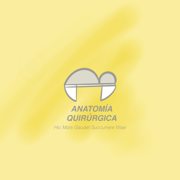Embalming
EMBALMING PROCEDURE
- The first phase is venous cannulation. Two liters of a normal saline
solution are introduced via the femoral vein to clean the venous
system of possible thrombi (composition details in the final table "Cambridge Solution").
- In the second phase, the femoral artery (usually in the middle third of the left thigh) is cannulated. By means of a longitudinal incision and by planes, the location and identification of the femoral artery is approached. Next, it is checked that there are no calcified atheroma plaques that prevent cannulation. In this case, the femoral artery would be searched on the other side, if the situation was the same, the femoral artery would be searched in the femoral triangle. If the obstruction persists, the sequence would continue to search the neck for the left common carotid artery and, finally, the right. In the chosen and suitable artery, the cannula is inserted and fixed, which is connected to the injection system and the latter to the embalming liquid drum.
The pump is turned on and the injection is carried out, gradually with a
very low flow, checking that the cannula ligation is tight and there are no
leaks in the artery or in the system; If everything is correct, it is checked
that the liquid comes out through the venous line that has been left open, up
to a total of 2 liters, at which point this line is closed and the flow
increases to the maximum standard speed to continue with the arterial injection
. The process is carried out by technical personnel from CDC & SD, who
carry out this activity protected by the necessary PPE.
Once the injection is finished, its good function is verified in the increase in abdominal volume, engorgement of the superficial veins and the loss of fluid from the nose; The presence of white spots on the skin should also be observed, indicating the deposit of phenol in the peripheral vascularization. Once this process has been verified, the injection of the lower limb distal to the starting point is carried out, changing the cannula at the same point but oriented just in the opposite direction. With the lower limb completely perfused, the cannula is removed, and the artery and cutaneous plane are sutured.



